Innovations for Sustainability
Innovations for Sustainability
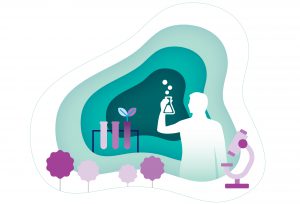
IRPC values research and innovation developments that meet ever-changing needs of consumers as well as society that is convenient and environmental conscious. IRPC is determined to develop environmentally-friendly products for society well-being. We will achieve this by adhering to best practices and circular economy principles, which reduce waste from our production processes and lowers our environmental and social impacts. To be an organization of innovation, we must be able to sustainably create added value for all of our stakeholders and IRPC. This includes increasing competitiveness through our product research and development, optimizing use of natural resources by complying with the circular economy concept, and expanding our information technology systems to meet international information security standards.
Innovation and Product Development
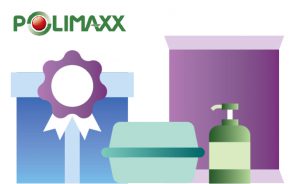
Management Approach
IRPC strengthens our research and innovation development to increase the competitiveness and sustainably grow throughout the value chain. With products that are geared towards eco-friendly and social innovation, IRPC also invents new products that contributes to creating new business opportunities, expanding business growth, and meeting consumer demands during the COVID-19 pandemic.
IRPC have implemented our Innovation Excellence strategy for our sustainable growth, focusing on 8 strategic innovation frameworks, to which Analytical Lab Excellence has been added. Our analytical laboratories have been accredited by ISO/IEC 17025:2017 and registered in the category of private analytical laboratory for environmental sample testing.
For our product innovation, still focusing on value added products or specialty products and green products which meet the requirements of the current and future consumers, we aim to elevate our innovative capability to be competitive with global leading companies by 2025.
IRPC’s goal is to be “world-class fast follower of advanced materials” by 2025. Under IRPC IC Excellence, our vision for 2025 is to (1) increase sales of new products by 25% of all plastic products, (2) increase incremental margin from new products by 25% of the product’s selling price, (3) incubate business from New S-Curve technology via an open innovation concept, and (4) transform knowledge into revenue. IRPC’s strategy for Industrial Focus is broken down into three components:
- Core Business which are customer-centric product development to maintain and strengthen market position by cost reduction and application development. Core business industries include automotive part, E&E appliance, packaging, construction, and cost reduction.
- Adjacent industries includes healthcare & hygiene, circular economy, chemical & additives, and nanomaterials. Adjacent which are high value added or niche product development to achieve margin boost up by solid core knowledge and R&D expertise.
- New S–curve which are technology-driven product development for new business opportunity growth by immersing to the megatrend. New S-curve products are managed through the De novo Program consisting of three platforms, conductive ink/film, Li-S battery, and OLED lighting.
The Product Development Committee (PDC) meets once a month to ensure that management goals, strategies, and future directions of products are aligned with IRPC’s business plan. Additionally, the committee also organizes and filters IRPC’s products by ordering them according to its significance with market forces and IRPC’s strategy.
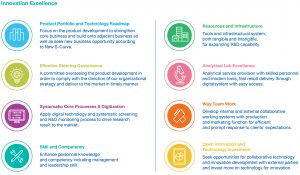
1. Policy
Research and Development Strategy Transformation 2017-2020 was developed in order to shape IRPC’s research and development to be world class as well as to competitively to sustain IRPC business. IRPC’s innovation and development strategy consists of:
- Added Value Products (market entry to special-grade product with high-quality products and production cost management)
- Technological and Product Development (new businesses expansion aligning with global trends)
- Suitable Processes and Tools (establishing processes and tools, and upgrading R&D personnel).
Innovation and Operational Excellence (IOE) has a vision of “IOE Moving Forward Together for the Excellence by 2025”. Under this vision, IRPC outlines 4 different value propositions which consists of:
- Competitive Leverage: increase competitiveness and sustainable growth through innovation and digitalization which is encompassed by IRPC Innovation Center (IIC)
- Protecting Value: operational excellence management system (OEMS) has a core function of managing safety, health, and environment to achieve great operational efficiency
- Reliability & Asset Integrity: reliability and asset integrity is used to mainly support operation
- Corporate Citizenship: collaborate with local communities and move towards a goal of eco industrial
2. Management System/Process
Innovation is one of the key drivers to a company’s future success and therefore one of the top priorities. Innovation drives product, while process and organizational change is the key differentiation factor among companies.
Innovation Process
The process for innovation research and development starts with idea generation. The ideas are gathered from in-house employees and research collaboration with external researchers and experts. Those ideas will be assessed considering the potential benefits and the efforts for developing the ideas to commercialization phase.
Open Innovation
Innovation is a process that depends on a variety of factors such as knowledge, experience and creativity. In order to access, collect and combine those factors, a variety of collaborative input channels are available.
Open Innovation Management has been focusing on strategic formulation to drive successful research & development (R&D) and Product & Technology Roadmap execution. IRPC is currently seeking new technology to fulfill product development portfolio through an open innovation concept with cooperation from academic and research institutes (Vidyasirimedhi Institute of Science and Technology VISTEC and National Science and Technology Development Agency NSTDA) as well an international technology incubator to invest in technology Startup Company.
IRPC manages products in the New S-Curve group through an open innovation concept and uses employee’s knowledge on innovation to build upon future business growth. While, New S-curve strategy focuses on business growth opportunities in the long term for sustainable business, investments to open innovation and technology are emphasized for business growth strategies in the short to mid-term.
Product Innovation
R&D for value added products have been focusing on cross functional collaboration with marketing, production engineering and other stakeholders involved in the product development value chain. The R&D ecosystem has also been improved in order to facilitate the acceleration of product development including increasing number of talent researchers, improving the current researcher capability, increasing advanced research equipment and instruments. This development aims for cost reduction and margin enhancement leading to product competitiveness and fast response to customer requirement.
Green Products
IRPC is committed to the research and development of new products to meet the different requirements from customers and development of eco-friendly products which creates more business opportunity and helps IRPC to be able to adapt to the change in economy, society and environment, which leads to sustainable growth.
Circular Economy
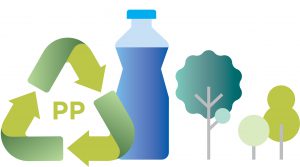
Management Approach
Eco–Solution Model
IRPC have applied the eco-solution model following circular economy concept for closed loop management with efficient recycling process. The plastic waste platform was built to collect plastic waste data from our plants and the customers’, providing easy access to the data and efficient plastic waste management. It also helps saving cost and resources as well as add value to the plastic waste. The cycle of the Eco-Solution Model begins at taking plastic waste from three different channels: post-industry recycled (PIR), post-consumer recycled (PCR) through our collector network, and packaging film or PP barrier film to the allocation center. The allocation center then distributes collected plastics either to gasification/pyrolysis or return for further usage. Under return, plastic wastes further undergo treatment for recycling mainly recycle plastic based materials (PP, HDPE, PS) or upcycling to create decking, wall panel, and fence. IRPC’s primary objective is to enhance PP recycle compound business by using post-consumer recycled (PCR) to meet customer needs and response to circular economy.
Furthermore, we collaborated with National Research Council of Thailand and Kasetsart University to promote zero plastic waste with the objective to manage plastic waste from the origin with no waste polymer for disposal in every supply chain from the beginning to the end. We are the first company in Thailand who has been certified Zero Plastic Waste in Production Process which will elevate plastic industry of the country and become the model for other ASEAN countries in the future.
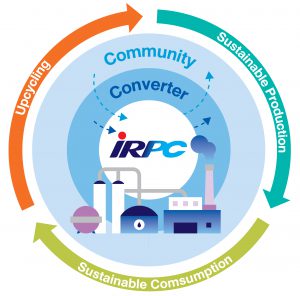
Information Security
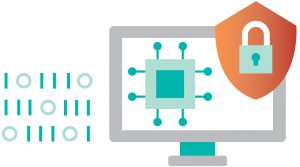
Information Technology System
IRPC’s goal is to improve IT operations by raising the efficiency of infrastructure and networks to accommodate IT expansion, command international management practices, ultra-high security, promotion of technological application in all sectors of work. IRPC expands and improves ERP (Enterprise Resource Planning), a core system, for application in IRPC affiliates and aids internal administration while cutting operating costs. Development of CCMS (Continuous Control Monitoring and Auditing System) leads to an effective internal control system, which in turn induces widespread corporate governance practices. Finally, development of IT security standards on a par with ISO/IEC 27001:2013 Infrastructure (Data Center, Core Network and Virtualization System) of international information security standard.
Management Approach
Cyber Threats refers to any threats that have impacts on networking systems happened as a result of any wrong doing activities using computer, computer systems, or malware with aims to attack the computer system, data, and being imminent threats that will cause damages to computer, computer system and any relevant data. IRPC aware of this impact, therefore, the policy of information security is developed and implemented throughout the organization.
Cyber security risk is assessed under the IRPC’s Risk Assessment Committee, led by a Director of Risk Management Committee. The Senior Executive Vice President, Corporate Organization Effectiveness is responsible for overseeing cybersecurity aspect of the company.
1. Policy
IRPC developed and implemented the IRPC’s Information Technology Management Policy, which has been issued in 2019. The statement covers
- Comprehensive high level cyber security;
- Cyber security risk assessment by both internal and external auditors at least once a year;
- Cyber threat monitoring process;
- Level of Cyber Threats;
- Reporting of critical level threats to Information Management System Committee;
- Collaboration with functions to collect, monitor, inspect to prevent any threats;
- Promote knowledge, understanding and awareness of cyber security to employees;
- Training to create awareness and understanding regarding cyber security to its employees including reporting procedures and information gathering procedures that can be beneficial to the investigation; and
- Penalty; and
- Cyber Security Incident Response Process
2. Management System/Process
Cyber Security Training Material under topic newly impending cyber threats and how they impact our business. Also employees are provided with training regarding personal data privacy. The Corporate Affair Office organized training to all employees, while each function also organized training to its employees as secondary training.
An escalation process for both employees and non-employees to follow has been clearly stated in the IT management policy, where any suspicious activities must be reported to their supervisors or IT provided HELPDESK. The suspicious activities shall be reported, include malfunction of SAP system, Phishing mail, information hacking or attempted hacking, etc
Information Security/Cyber Security performance is evaluated as part of employee performance evaluation. Appropriate disciplinary actions are set in place for any wrong doing by employees. Also Cyber Security has been set as KPI for IT employees to prevent any cyber threat.



 Live Stream
Live Stream